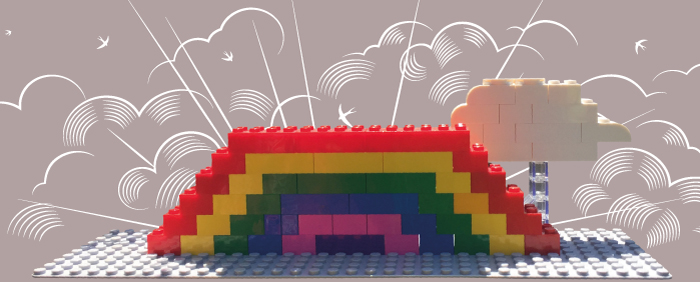Alan and Edwina both have young kids, and throughout this lockdown, there have been some quality Lego creations! However, as with all innovation strategists, the psychology of child’s play has crossed over into our work and below are some reflections on what it taught us back in the adult world:
The Cucknell Household: 3 Lessons from a 5-year old
My ‘customer’ is a brilliant visionary but… challenging to work with. He is very vocal about what he wants and very specific, but whatever I make it’s not what he actually wants!
I’ve learnt that what’s important to me about the models I’m building isn’t necessarily important to him. I try to make forms symmetrical and spend ages finding matching pieces – important things like matching plane wings. I try to make things representative in scale – like the size of the wheels compared to the body of the car. And I try to match the colours. These things are important to me to bring my vision to life and I assumed that are important to my ‘customer’. But he doesn’t even notice… in fact, he is upset that I spent so long building and his interest has moved on! If I haven’t met these challenging requirements in time, his needs will have changed and the interest will have moved onto something else… and if it’s just wrong… I could have an adult-sized tantrum on my hands!
It occurred to me that these experiences resonate with important innovation behaviours:
- It’s important to constantly challenge our assumptions about what the ‘customer’ expects – the ‘quality’ of what we produce is only measured by them, not us.
- Move quickly – rapidly MVP – test, test, test. I learnt that only by building very quickly and getting rapid feedback did I manage to keep this customer happy!
- Which leads me to “don’t bother matching the colours…”. It reminded me of an insight I first heard from Claudia Kotchka (former Chief Design Officer at P&G): if you give consumers a fully finished prototype they feel they have to be precious with it and your feelings and the feedback you’re likely to get will be limited. But if you engage with them early and give them a rough cardboard model with paint and paper hanging off they think – “you need help” and roll their sleeves up let you have it all…
The point of this testing and customer interaction is to help you prioritise where to focus your time and investment. If you rush on too far (e.g. matching colours, building aesthetic) before bottoming out the needs, features, business model – you will end up with a lot of rework, just like I did!
The Mullins Household – Lessons in Career choice!
There are two different types of Lego builders in my house:
The Architect: My 5-year-old son is an architect and dreamer. He creates the original Lego set once, and within minutes it is destroyed and he makes his own ‘creations’. You never get the same creation twice as each piece has different potential each time he plays. Every creation is imaginative and never aesthetically beautiful or complete. As soon as something is workable, his imagination makes up the rest and the play starts.
The DIYer: My 8-year-old daughter is a DIYer and crafter. She loves ornaments and prefers when she has made them herself. She is collecting Harry Potter Lego, creates the sets perfectly and then they go on a shelf. They are played with as complete sets with Lego mini-figures moving around the rigid structures.
Lessons:
This reminds me of Starters and Finishers in business. I think my son is capable of being a passionate CEO of a start-up. He will just need his business to be acquired before his mind moves onto his next project! I trust my daughter to be the CEO of an MNC. She’s a finisher. The process required to keep a large corporate going suits her personality – there is a rigid framework, with work to be completed and reported back to shareholders.
Both kids are equally amazing, but excel at different things and will add value to the business in very different ways. During the lockdown, seeing them forced into working and playing together for now 14 weeks with no other children has been fascinating. They work brilliantly for a while and then their differences cause a clash, and then they go back to appreciating their differences. They have been forming, storming, norming before my eyes!
Conclusions: We can learn much about human nature from children, and who we were as children ourselves. Think on the classic, What colour is my parachute book, and the ‘Who am I?’ exercise to help determine the kind of career and business you thrive within.
Ignite designer Martin says, “the designer is a child that never grew up” – they question assumptions we take for granted (why, why, why) and don’t get bogged down in the orthodoxies of the world as it is – they see the world as it could be!
During the lockdown, we have all experienced an odd reality, in which we have found new ways to exist, work, play and interact with our communities. Focussing on the work at hand, whether that’s satisfying customers or keeping your own little team working effectively together, continues to be vital.
And take some time out – during this lockdown, giving yourself a break to play is necessary therapy.

